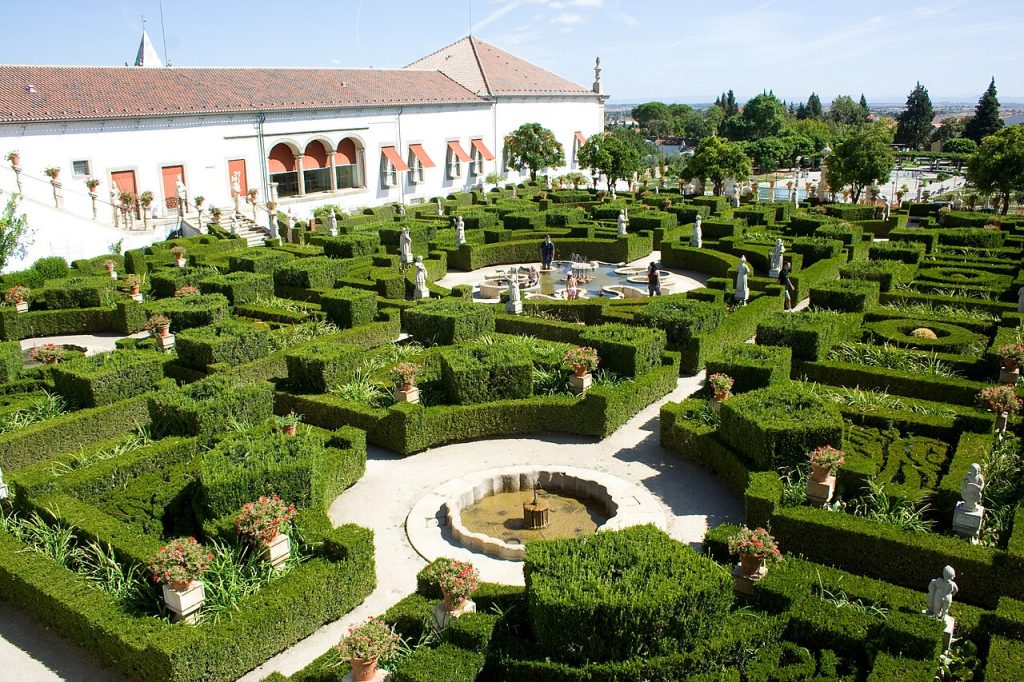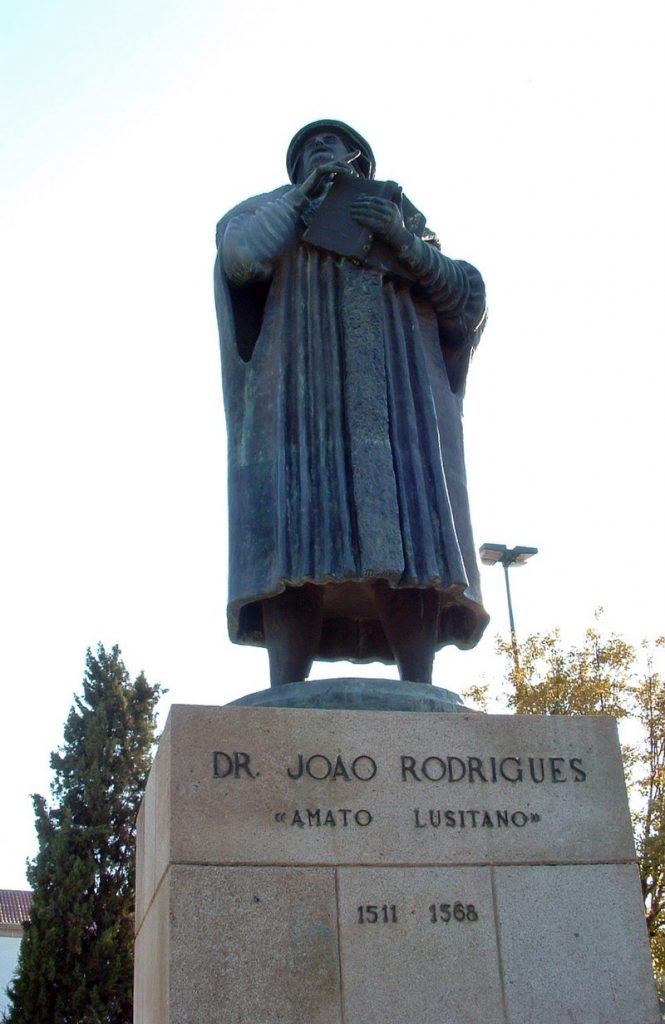
Castelo Branco is known, as the first part of its name suggests, for its medieval buildings. The Jewish presence dates back to at least the 14th century. An organised Jewish community existed in the town until the advent of the Inquisition. Old buildings in the town’s Jewish quarter bear traces of this presence, such as a menorah in Rua d’Ega. A synagogue was apparently located at 10 Rua de la Misericordia.
Hundreds of complaints of the Inquisition were lodged over the centuries following its imposition, resulting in numerous victims.

Castelo Branco later became an important centre of Portuguese Marranism. Among the town’s most important figures were the explorer Afonso de Paiva and the doctors Amato Lusitano and Elijah Montalto. One of the famous descendants of these Marranos, the Portuguese author Camillo Castello-Branco (1825-1890), bears the town’s name. The city boasts a statue of Amato Lusitano , as well as a statue of Moses, although the latter does not appear to have come from the city or to have opened the Tagus by raising his arms to the sky, although it does top a waterfall in the Episcopal Garden .
Following the revival of Portuguese Judaism thanks to Samuel Schwarz, some Marranos returned to the open practice of Judaism in the 1920s.
The municipal museum has a stone with Hebrew inscriptions dating back to 1297 and believed to have come from the Belmonte synagogue.
A House of Memory of the Jewish Presence has opened in Castelo Branco, telling the story of this community.
Sources : Encyclopaedia Judaica, Rede de Judiarias